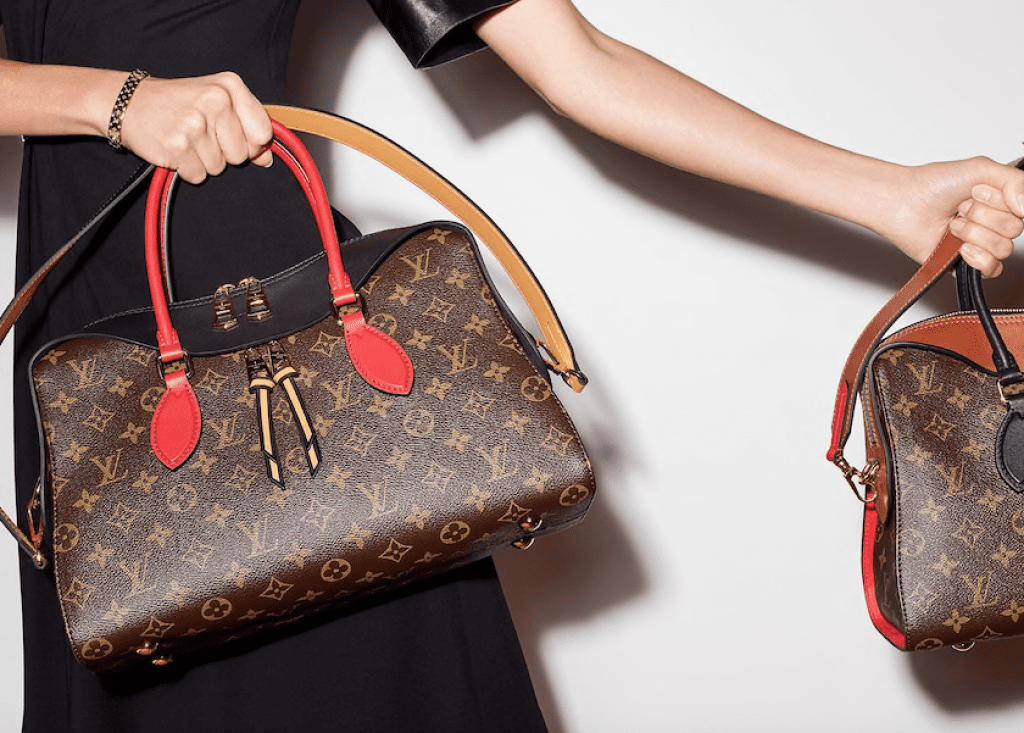Chinese police recently busted a counterfeiting scheme in Shanghai, one that has ensnared at least one of luxury brand Louis Vuitton’s own employees. In August, authorities in Shanghai arrested dozens of individuals and seized an array of equipment, textiles, and fake Louis Vuitton bags in connection with a sweeping – and particularly upscale – counterfeit manufacturing operation that boasted the cooperation of a Louis Vuitton sales associate, who repeatedly sold off the newest bags to the group in order to enable it to get a head-start on making the illegal offerings.
Far from the cheap, low-quality counterfeits that tend to permeate flea markets, outposts like those on Canal Street, and marketplace websites, such as Amazon, the bags at issue were different. Not only did the counterfeiters benefit from advance access to the real thing thanks to a sales associate at the Louis Vuitton Guangzhou store, who provided them with “yet-to-be-released bags” to replicate; ironically, they had an arsenal of sophisticated equipment that enabled them to produce “high-tech” bags complete with what would appear to the average consumer to be instruments aimed at identifying counterfeit goods.
Mimicking the tech used by certain luxury goods purveyors that have looked to various measures to distinguish their products from fakes and protect consumers in the process, the Chinese ring attached Near-Field-Communication (“NFC”) tags to the infringing bags. The little sensors – which are often attached to the insides of certain upscale garments and/or accessories – enable brands to program any information they want into the tags, which can then be viewed by consumers by way of their smartphones or other NFC-capable devices.
The use of such tech is not unheard of, particularly in the luxury space. Moncler, for instance, has been lining its pricey outerwear with NFC tags and other sensors for several years in furtherance of its quest “to protect its values by focusing on authenticity-traceability even in the after-sale phase.” However, the use of such tech in connection with the counterfeit Louis Vuitton bags is striking, as real Louis Vuitton offerings do not yet include NFC tags. While Louis Vuitton makes use of specific “date codes” – namely, a number derived from a proprietary system that indicates where and when the bag was made – that can be used to distinguish authentic goods from infringing ones, they do not (yet) bear capabilities, such as NFC or RFID.
Nonetheless, in the case at hand, if a consumer scanned the NFC tag attached to one of the counterfeit bags, they would be directed to the official Louis Vuitton website, further boosting the appearance of authenticity, and likely, significantly upping the price that the counterfeiters were offering up the bags for.
According to reports from Chinese news outlet CCTV, Chinese law enforcement arrested more than 60 “criminal gangs” tied to the operation, and at the same time, seized dozens of pieces of equipment, 2,000 counterfeit bags, and yards of trademark-bearing textiles that have a value of nearly $15 million if they were authentic.
In a statement on the heels of the bust, a representative for Louis Vuitton told WWD that it “has a zero-tolerance policy in regards to counterfeiting and this remains one of Louis Vuitton’s main commitments to its clients.” The brand, which is said to devote a percentage of sales every year to the enforcement of its valuable intellectual property, further states that “counterfeiting is the violation of the craftsmen’s talent, skills and the creativity of the artists to whom Louis Vuitton owes its success. Louis Vuitton is more determined than ever to preserve creativity in protecting its brand in the interest of its clients, its employees, and those who suffer at the hands of the counterfeiting industry.”
The Paris-based brand revealed that the sales associate at issue has been terminated from her position, but did not confirm what legal action it is taking against that individual and/or the dozens of people directly involved with the counterfeit manufacturing and sales. It similarly has not detailed the extent to which counterfeit bags had been released into the marketplace.
The news comes as a handful of individuals, including a number of former Hermès employees, appeared in court in France for a trial over the manufacture and sale of high-quality counterfeit Hermès bags by an organized crime ring with direct ties to the famed French brand known for its $10,000-plus Birkin and Kelly bags. Prosecutors set the stage in a court in Paris in June, detailing the workings of a small-but-mighty operation eight years after local law enforcement first arrested more than a dozen people and dismantled the internationally-reaching crime ring that was peddling counterfeit handbags branded with the Hermès name and the legally-protected design of some of its most iconic and world-famous handbags, and using at least some authentic materials to do so.
Among the ten defendants being tried in the counterfeiting-centric case are seven former Hermès employees, who are not only embroiled in intellectual property infringement charges but are also on the hook for criminal breach of trust (abus de confiance), a French cause of action that arises from the misappropriation/misuse of company funds or property.
The case got its start back in 2011 when Hermès began to suspect that things were awry under its own roof in light of evidence of “abnormal behavior identified through [its] internal monitoring systems.” Armed with such “clues,” Hermès took its findings to French law enforcement and filed a complaint, thereby, prompting what would ultimately spawn a year-long investigative partnership between the fabled brand and French law enforcement.











